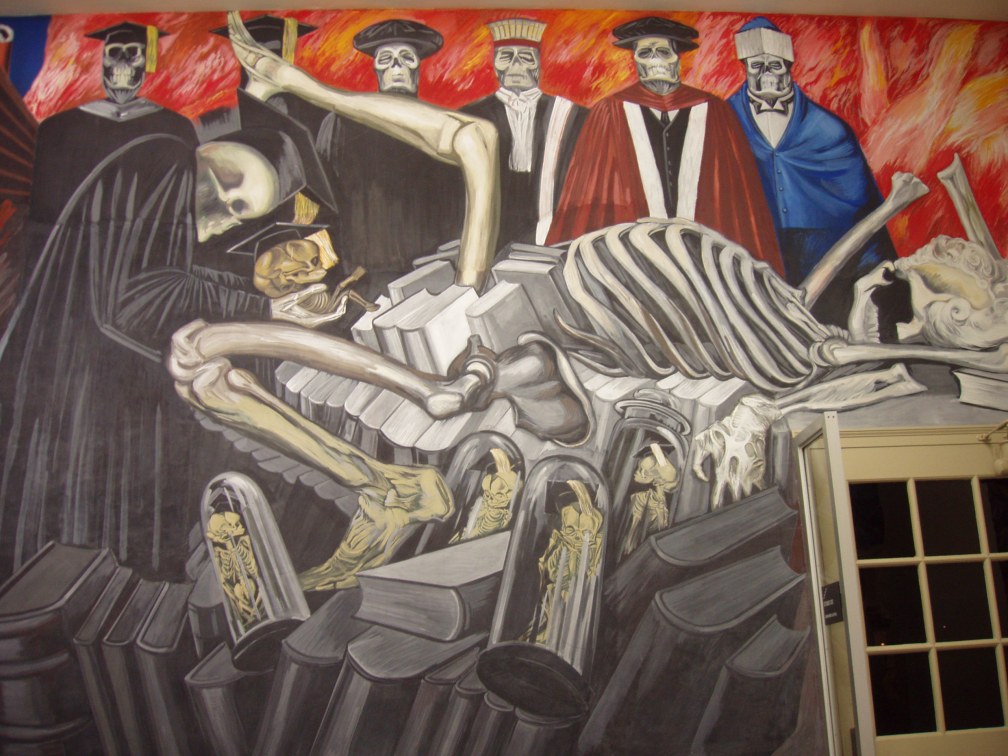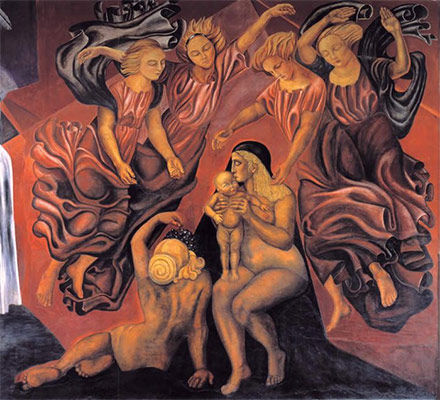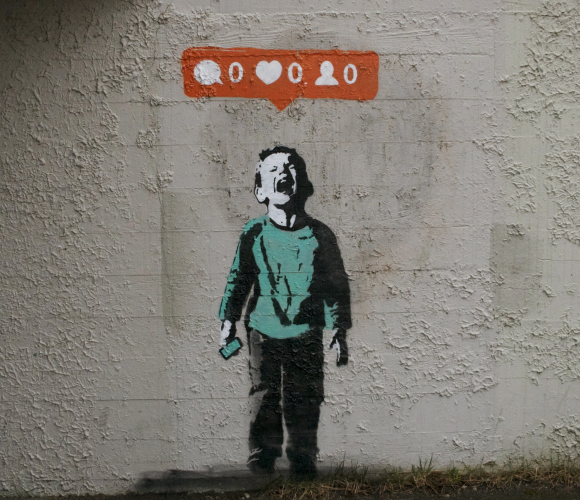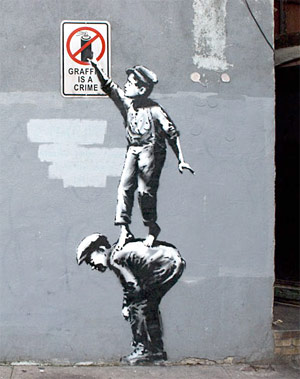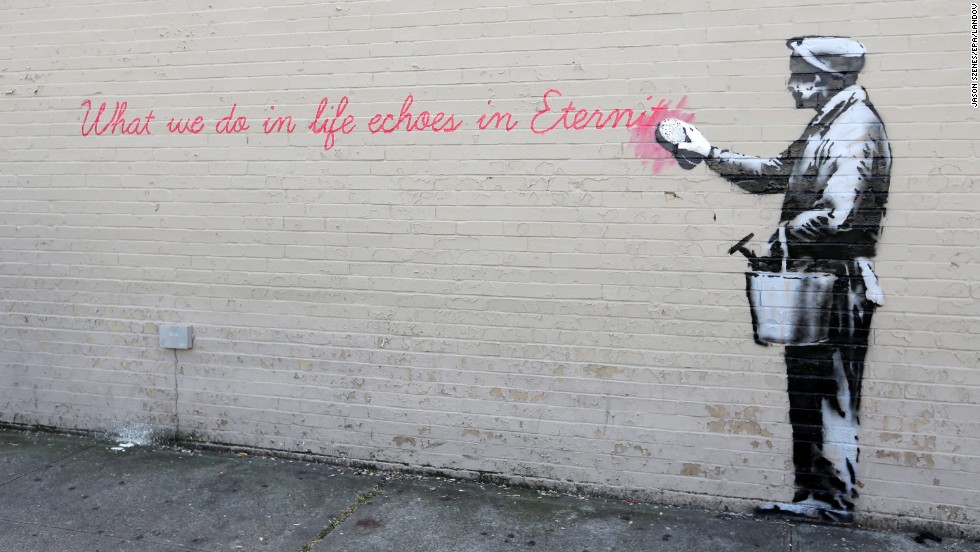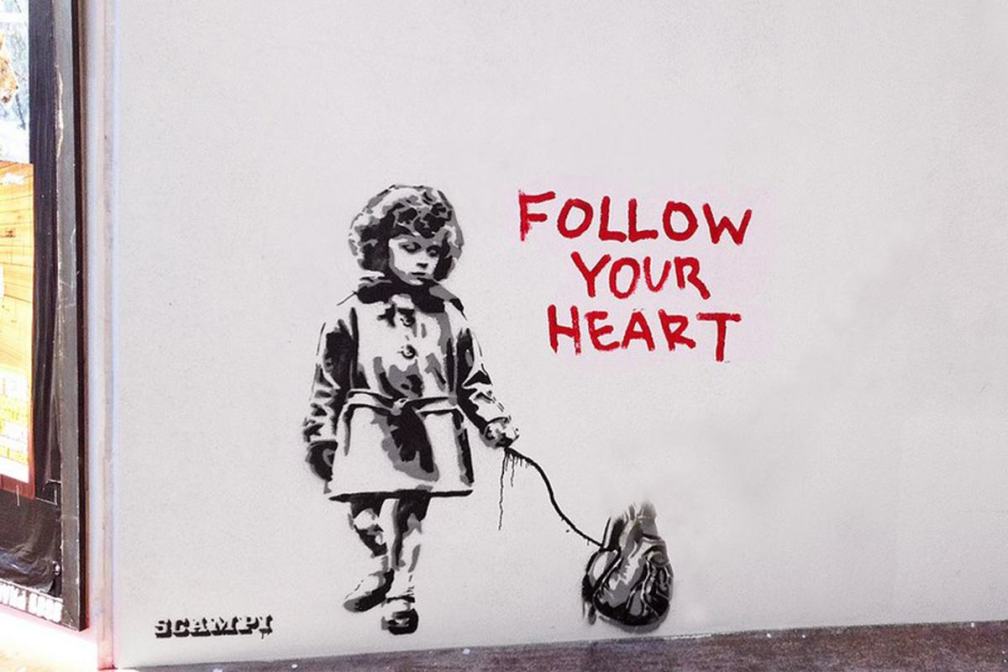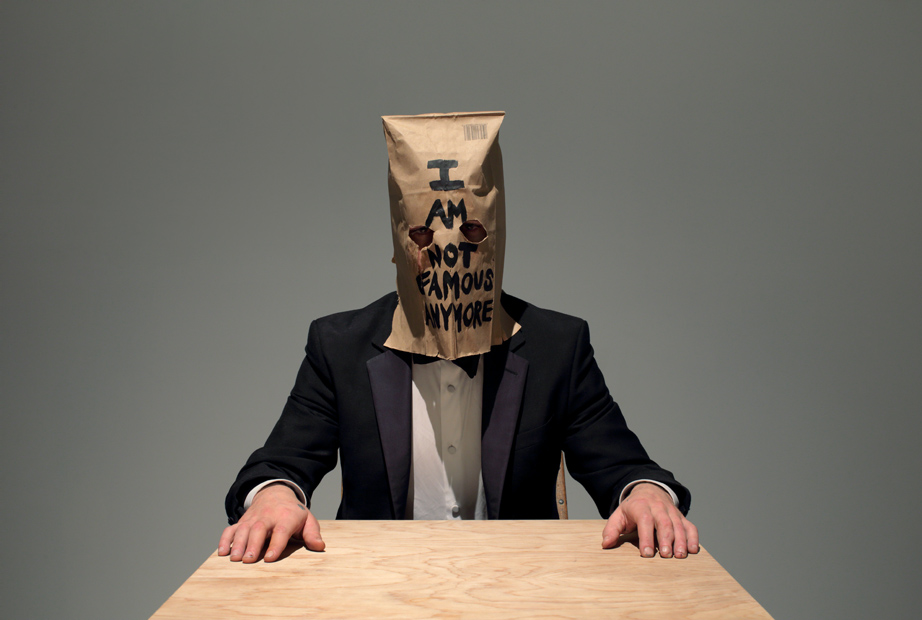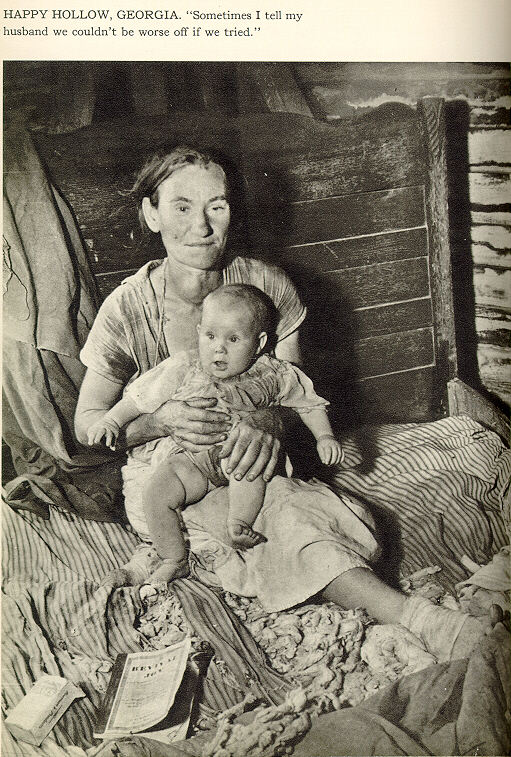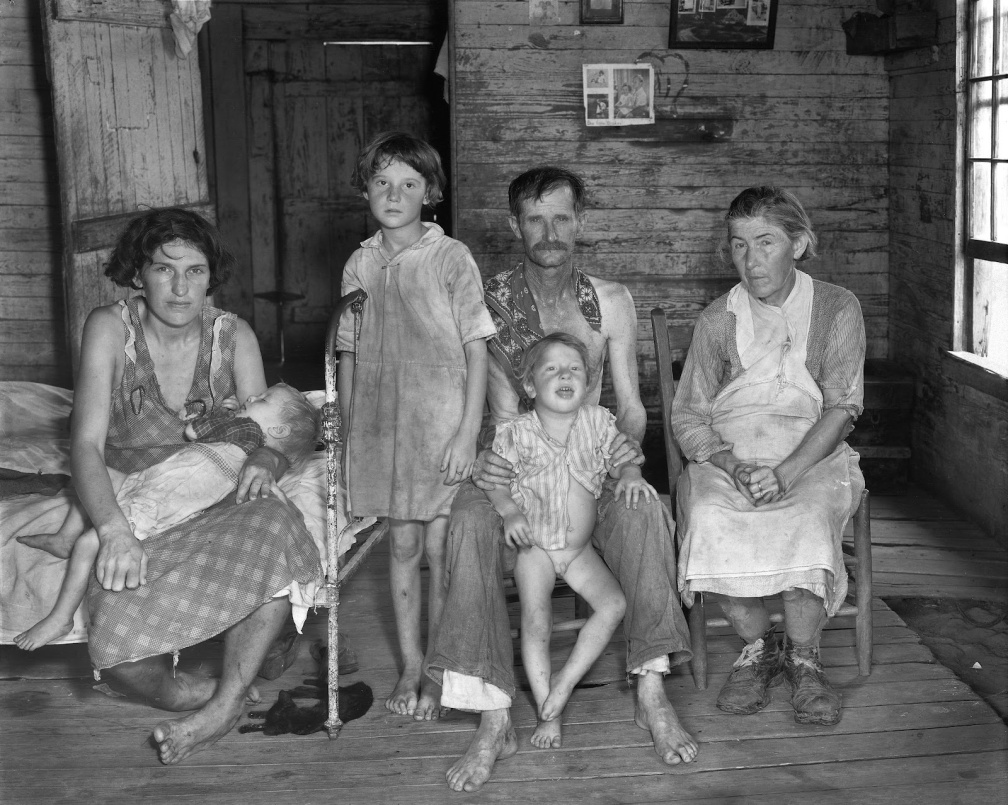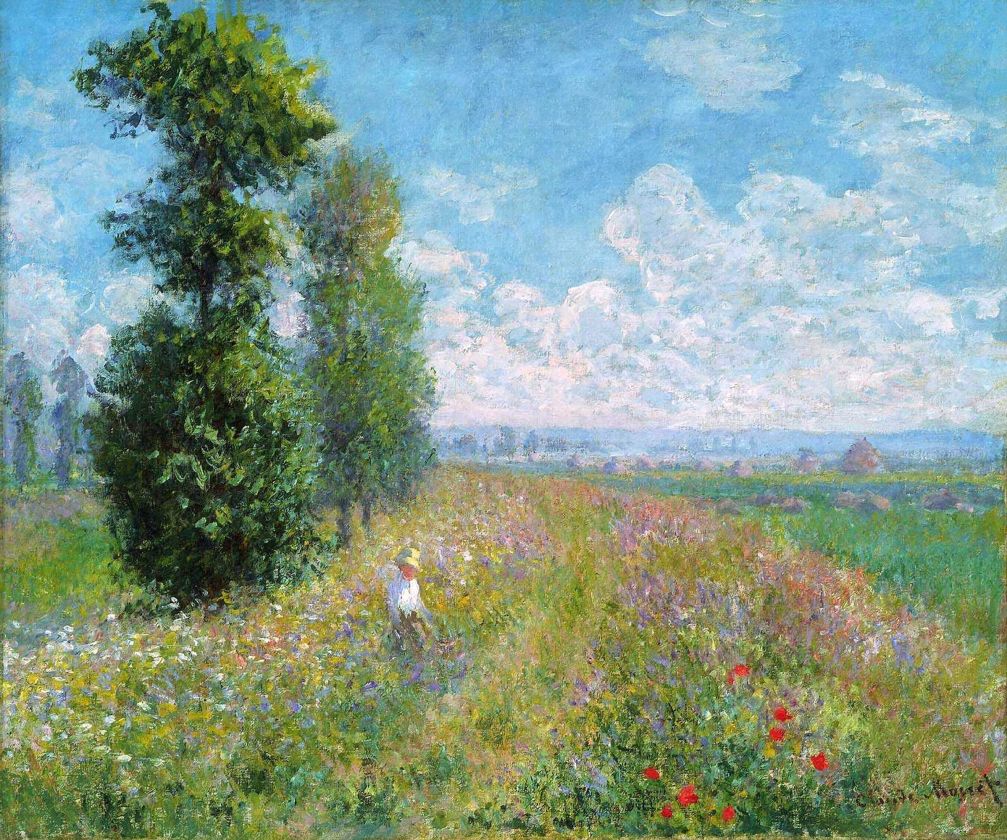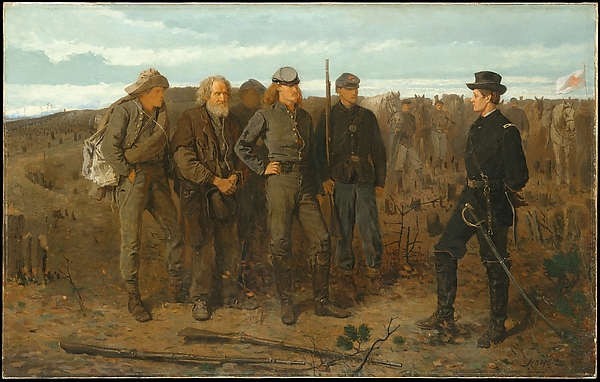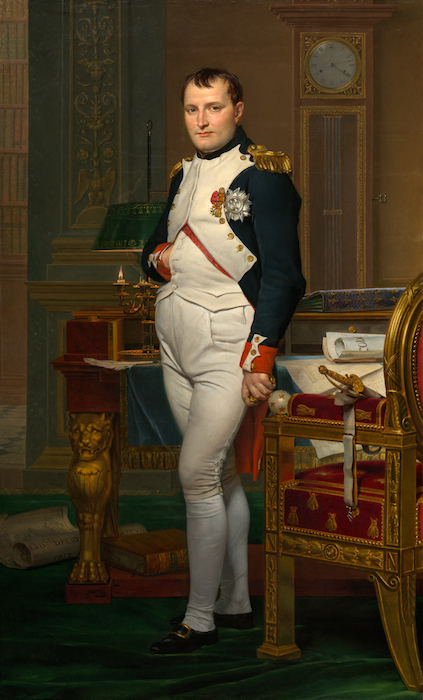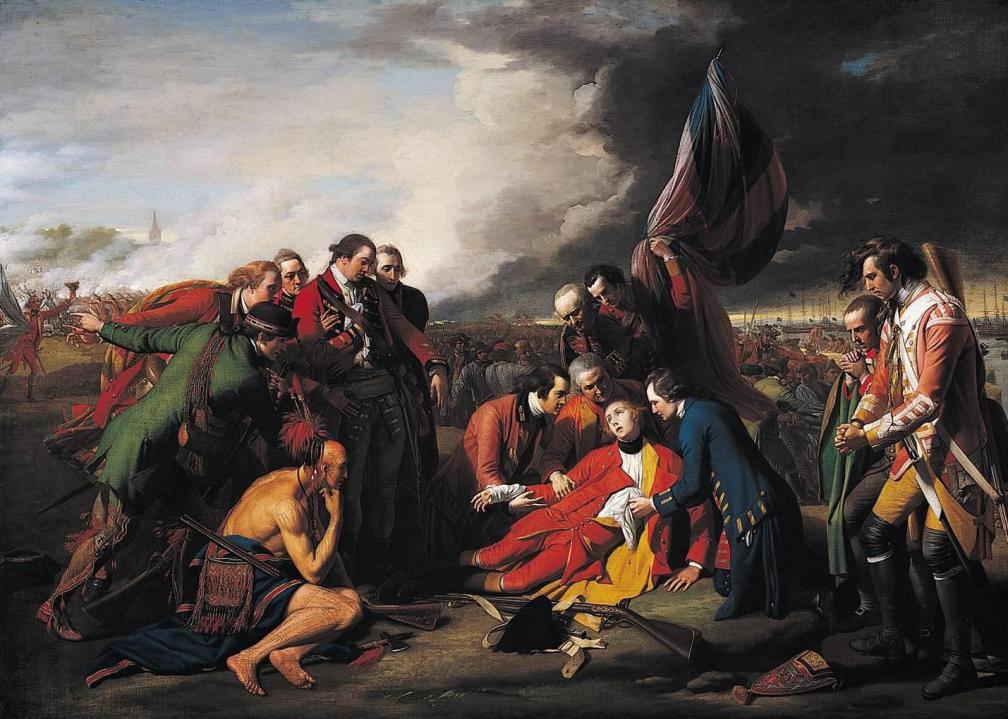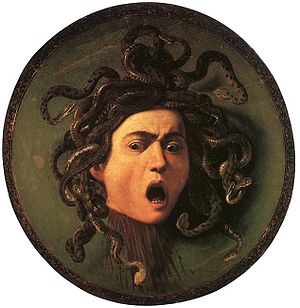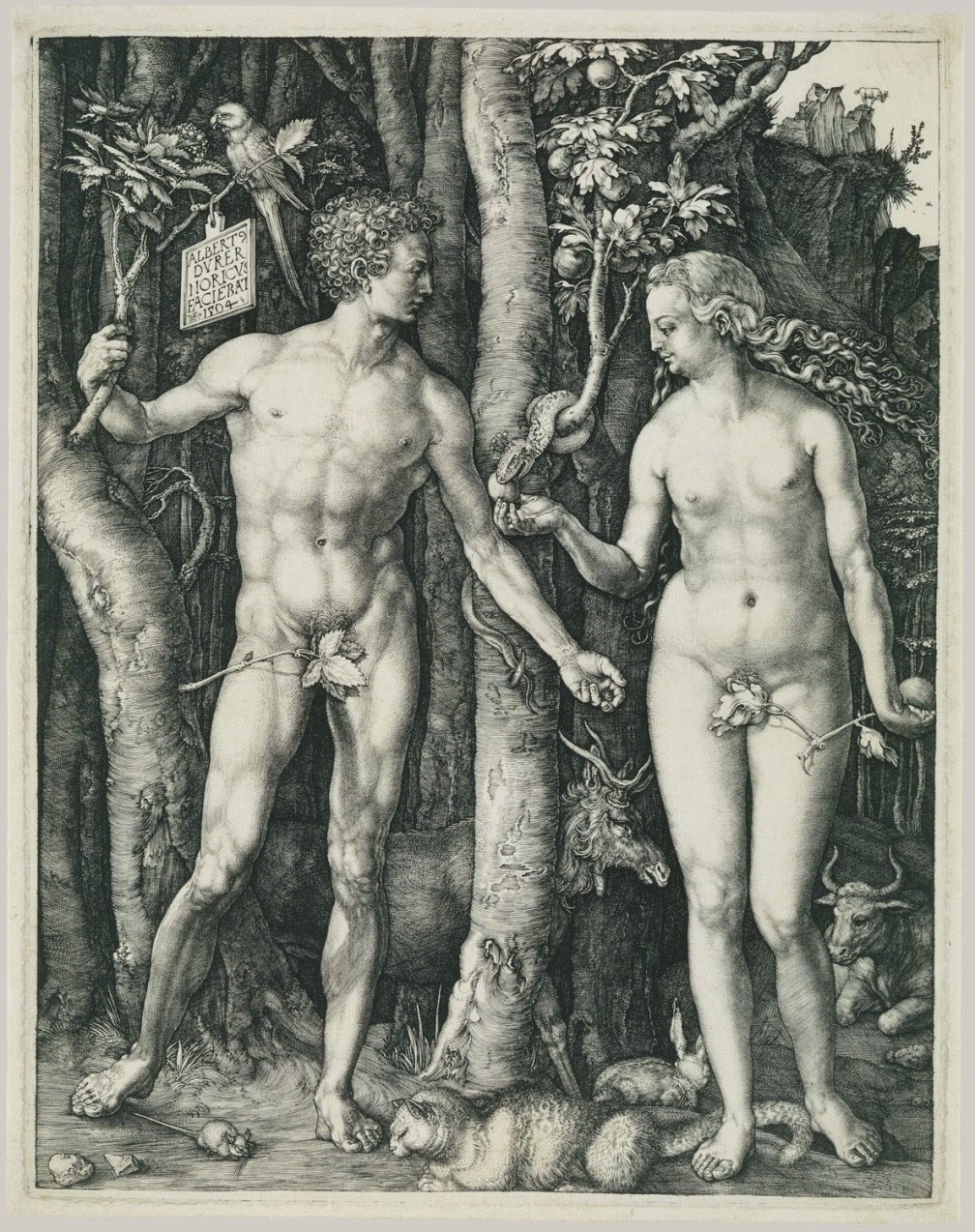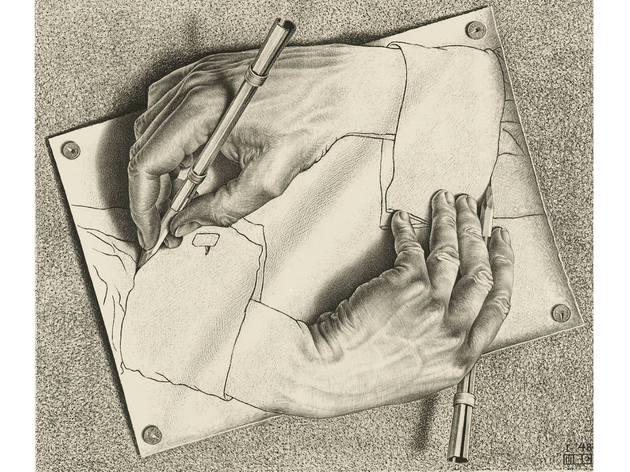Art seems to be a good window into the social and political movements going on at that given moment. Art is meant to be expressive, communicative, and when it is excellent, it is able to communicate lots of information. As the saying goes, “A picture is worth a thousand words,” and as far as well known art goes the words usually communicate a relevant message or subject.
Past

Archibald Motley, Gettin’ Religion, 1948
Among the Early Modern popular styles of art was the Harlem Renaissance. The Harlem Renaissance was primarily between 1920 and 1930, and it was a time in which African Americans particularly flourished and became well known in all forms of art. That being said, “Gettin’ Religion” came in to being a bit after the wave. I think that, because of that, this picture is able to capture the full gamut of possibilities that had become more accessibly to African Americans at the time – or as Dr. Davarian Baldwin said, “This piece gets at the full gamut of what I consider to be Black democratic possibility, from the sacred to the profane, offering visual cues for what Langston Hughes says happened on the Stroll: [Thirty-Fifth and State was crowded with] “theaters, restaurants and cabarets. And excitement from noon to noon. Midnight was like day. The street was full of workers and gamblers, prostitutes and pimps, church folks and sinners.” Langston Hughes’s writing about the Stroll is powerfully reflected and somehow surpassed by the visual expression that we see in a piece like Gettin’ Religion.” (Whitney)
I really enjoy this piece because, while it is a fairly busy scene, it is still a neutral and calm color pallet. The cool tones would help this image fit in most places, I think.

Daughters of Revolution, Grant Wood, 1932
During the same Early Modern time period Grant Wood was in the Midwest painting, typically, daily life on a farm. This piece, however, is noted as his only piece of satire. Upset that a local chapter of the “Daughters of the American Revolution” had snubbed a large scale stained glass window that Wood went through years of hardship to create and caused it to not gain notable recognition, Wood deliberately placed these three women in front of the well known scene of Washington crossing the Delaware, allowing their positions relative to the painting to denote which character they are meant to represent.
While not a direct reference to the daily life Wood experienced and saw every day, this image still draws a direct link to the sociopolitical climate at the time. Wood’s local chapter of “Daughters of the American Revolution” had snubbed his stain glass piece – why? Because Wood had traveled to Germany and employed German methods and workers to produce the piece, while Germany had been an enemy to the United States in World War 1, only a decade previously. This lingering hostility is a good example of the political climate and relationships that were the norm. (University of Iowa)

Little Money, Dorothea Lange, 1934-1937
This piece is part of the “Little Money” series by Dorothea Lange, showing several young men from Vermont around their automobile at their squatter camp in Nipomo, California. The men moved west as a result of the Great Depression & the Dust Bowl that was being experienced nation wide & in the Mid-West, respectively. They made their way to California in order to make a living picking peas. Their bounty after 6 weeks? $7.
Dorothea Lange had a natural talent & eye for photography and communicating the harsh and dreary conditions workers were enduring. She did an exceptionally good job at communicating the social climate in particular; times were hard and people were scraping by, doing what they had to do to make it from one day to the next. There is no question what the people are Lange were going through, as she did an exceptional job at explaining that with her art.
Present

Scampi Wellington, 2016, New Zealand
A bit of an odd first choice – but in an age where an entire generation can communicate in hyperbolical memes and phrases, the cynical wit is all too fitting for this point in age. An artist putting a literal twist on a feel good quote sums up, at the very least, the millennial generation in America. There’s also an ode to the retro vibe with the stencil of the girl – her poofy hair, flats with straps, and trench coat remind me of “Annie,” and I feel that our generation tends to pay a homage to styles past.
Being that street art can also still be considered vandalism if the artist is caught, I feel that the popularity of this style is also indicative of the current general attitude of personal revolutions, as well as entitlement. While these attitudes can be clashing, I feel that both are at the forefront of many political issues.
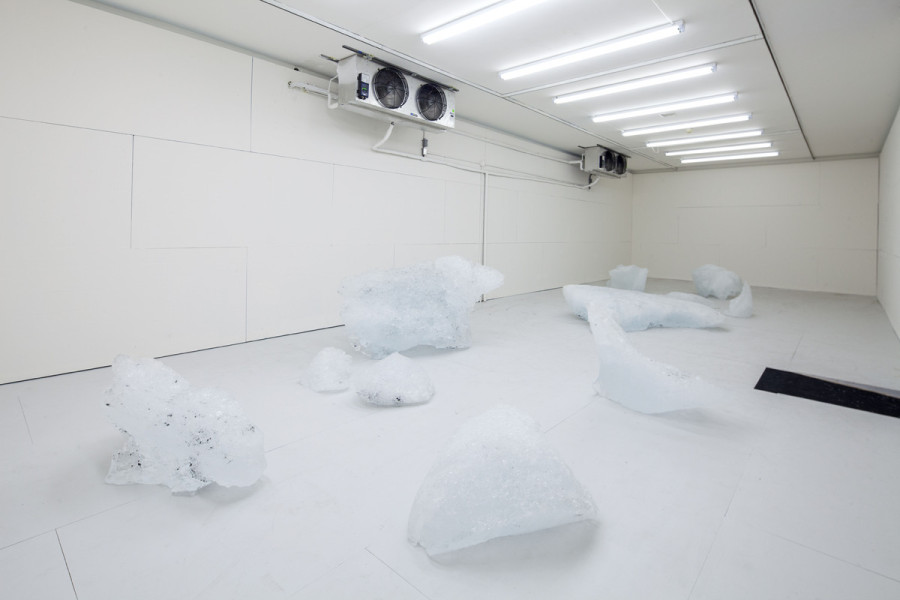
Your Waste of Time, Olafur Eliasson, 2013.
Chunks from Iceland’s largest glacier kept in a refrigerated gallery space made up Eliasson’s installation art exhibit, “Your Waste of Time.” An apt and straight to the point message that global warming is wreaking havoc on our environment. The piece “represented 800 years of Earthly existence, putting human’s physical experience in perspective.” (HuffPost) (the oldest chunk of ice is estimated to have originated 1200AD)
Seeing that global warming and climate change are at the forefront of our social and political buzz in the past few years, I think that this is a great example of artists using their platform to bring attention to the current sociopolitical climate that is being experienced.
While there are always artists that are doing their own thing, whether they be unaffected by, oblivious to, or simply unengaged with their surroundings, there are also always going to be artists making waves by using their platform to voice their opinions on the events around them. Whether they disagree with their ruling classes behavior and policies, think an important issue is flying under the radar, or simply want to spread the message of their ideologies, there is always a message to be sent.
Works Cited
